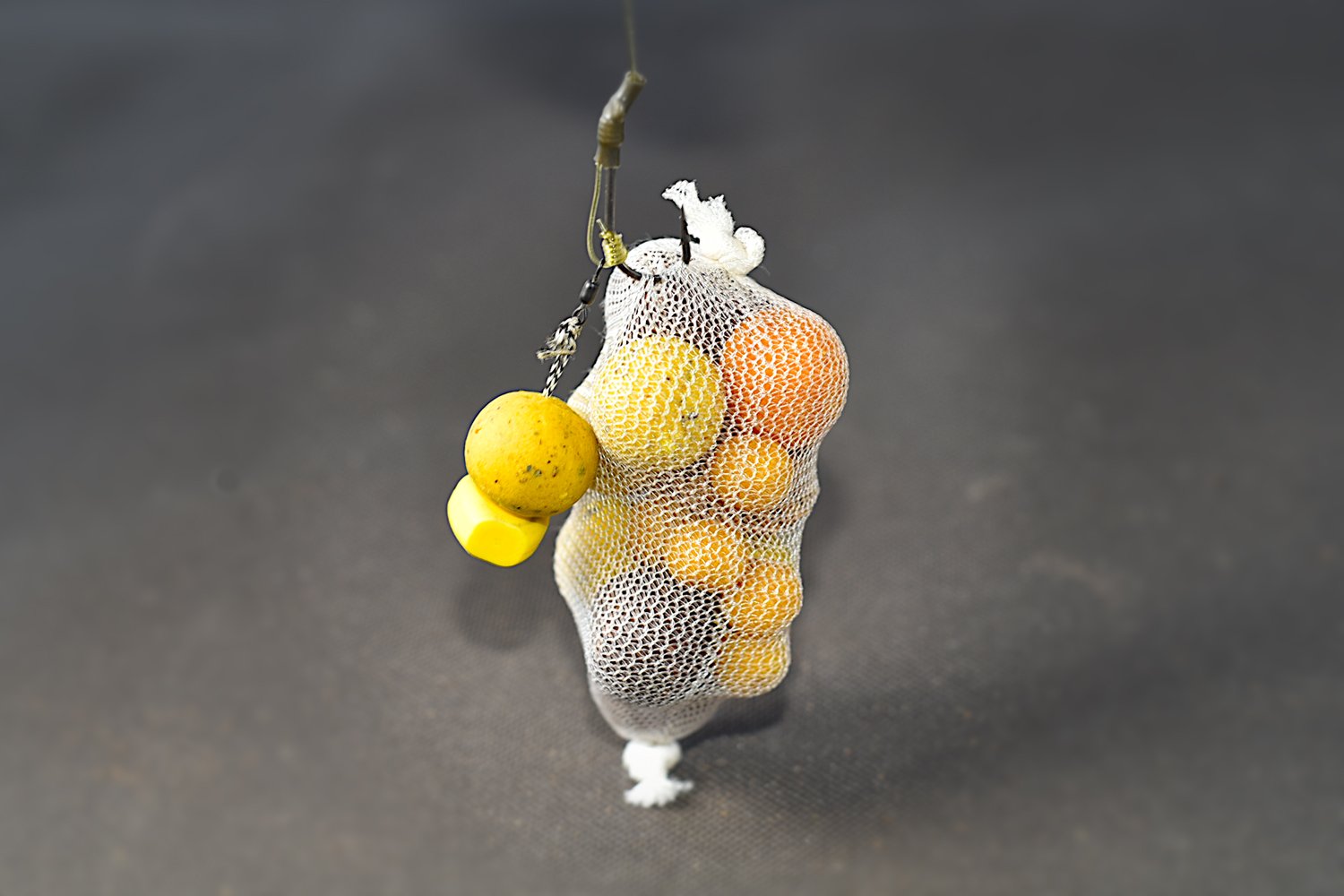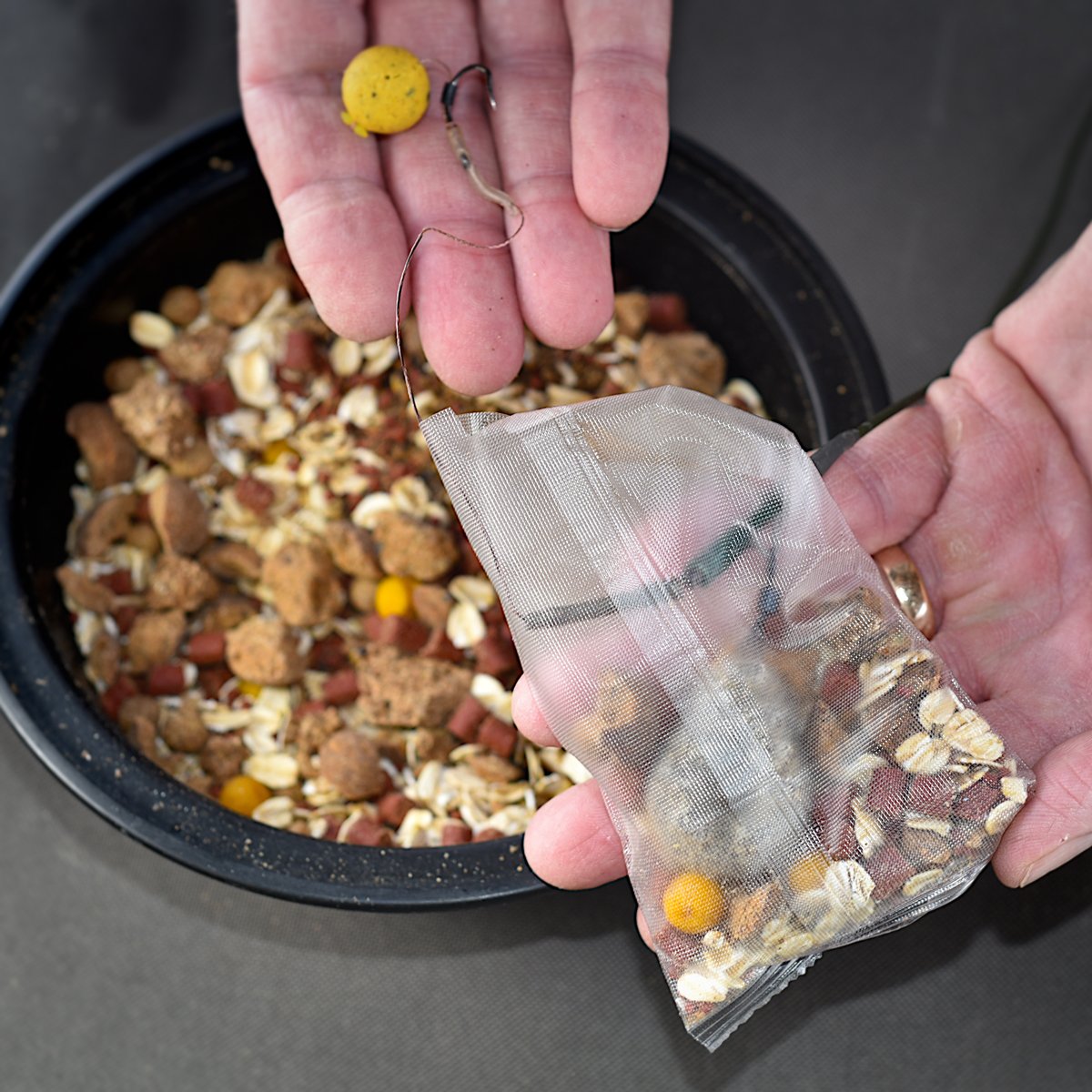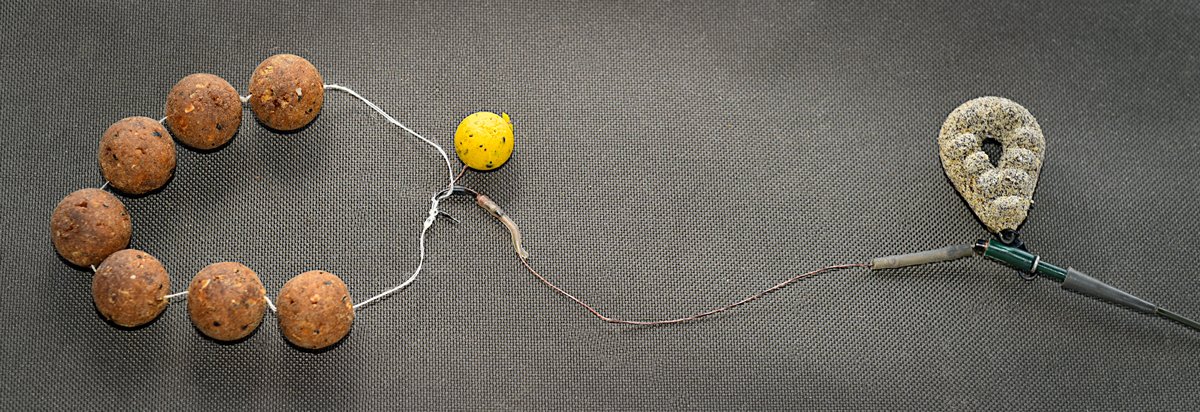USA Carp Angling Intro - Part 4
by
Wayne Boon
Hello and welcome to the 4th article designed to introduce and instruct anglers on the new age of Carp Angling…
Over the past 3 articles, I’ve covered some basic carp behavioral traits, baits, rigs, fish safety & conservation techniques that are employed by today’s world wide carp angling community.
This month, I’m going to go back to the topic of baits and introduce a product/presentation technique that not many folks outside of carp anglers will have used or even heard about…
This product is commonly known as PVA and is another method of presenting a bait attractant right next to your baited hook.
PVA or Poly Vinyl Alcohol is a product that totally dissolves when it comes into contact with water leaving no traces and is totally environmentally friendly!
I would like to mention here that the speed that the PVA dissolves is related to water temperature. It melts faster in warmer water… Anywhere between 30 seconds up to around the 3 minute mark in very cold water and dependent on the quality of the PVA product.
There has been much written about the various origins of the product but for the purposes of this article lets stick to how we use it to put more carp in front of our camera lenses…
Lets take a few minutes here if to quickly go over a few of the many PVA products available today…and then we’ll get into their many uses…
Look at this article as a crash coarse or brief overview on the subject, there are many variations and fine-tuning techniques that may suit the particular situations you find yourself confronted by in your everyday fishing sessions…
I encourage you to experiment, nothing here is written in stone.
Note: Some States and specific counties within certain states may consider the use of this technique as chumming! Please check with your area’s fisheries department about their regulations in this regards…
Using PVA bags is a way of serving up a few ounces of “free” food as an attractant for the carp right next to your hook bait!
It’s a similar concept to the “Method” or Pack bait mix feeder I talked about a few blogs/articles back. The main difference is the fact that the PVA bag can be filled with pellets, powders, boilies and other dry products that you can’t present as easily via the Method feeder cage. Even soaked and boiled particles such as maize, tiger nuts, chickpeas etc. can be placed inside a PVA bag if they’re first carefully dried in a towel and rolled in or mixed with the likes of dry bread crumbs, ground pellets or milk powder etc.
One note certainly worth mentioning is that oil based liquid attractants can be poured into the bags to add flavor without dissolving them. It follows that you can pre-soak your pellets or boilies in the same oil based liquid before filling the bag with them. Just make sure the liquid you use does not contain water…
Note #1: Oils are best used in the warmer summer months when they can disperse easier and the fish are better equipped (digestion tract enzymes are active with in the carp’s gut) to digest oil based foods.
Note #2: Salt water does not dissolve PVA so if you use a Non Iodine salt (sea salt, Pink Himalayan etc) in water to soak your bait (Maize, tigernuts or other particles) in, it should be good when gently padded dry with a towel and added to your PVA netting or solid bag. Carp love salt so it also can be an excellent edge for you.
Here’s an example of a fairly typical dry PVA bag mix containing oats, various fish meal pellets, boilies and crushed range cubes.
Lets take a look at some of the various PVA products that are available to us…
PVA Stocking or Netting
The netting comes in various sizes (diameters) but basically, there is one that’s generally wide enough to carry boilies around an inch wide and another about two inches wide to carry pellets and “dry” mixes…
The netting comes pre-mounted on a tube as shown, you tie a half hitch knot at the bottom of the netting, fill the tube with the amount of mix you’d like to feed the fish with… A plunger generally comes with the product to enable you to compact the mix within the tube before pushing it out and tying the bag off with a knot. See photos below:
Filling the PVA netting…
Photo showing the mix in the PVA netting
Generally about 3” to 4” of PVA netting tightly packed with food is ample before cutting the netting with scissors and tying another half hitch knot to secure the food.
Cutting the PVA bag
Finished PVA netting bag
After baiting the hook, its just a just simple job of threading the netting onto the hook 3 or 4 times to secure before casting out.
PVA netting bag on baited hook
This next photo shows a wide netting bag with some boilies tightly packed ready for casting.
PVA netting bag with Boilies…
Solid PVA Bags
Solid PVA bags come in various rectangular sizes and are used to hold finer powdered mixes. Various bait presentations can be achieved but again here to start with, we’ll just cover the basics.
Start by pouring a little of the mix into the bag first, then place the lead weight and safety clip in there as shown below.
Next, fill the bag to a little under half full with your mix and then carefully place the hook length and your baited Hook into the bag making sure the hook length material doesn’t tangle.
Baited hook inside the solid bag too…
Finish filling the bag with the mix to about four fifths before sealing the bag.
To seal the bag, moisten your thumb and index fingers with plenty of saliva and quickly dampen all of both the inside and outside of the top inch of the bag before twisting the top of the bag around the mainline coming out of the top of the bag as shown. Practice will make perfect here…
To make sure the bag is sealed, especially on a long distance cast, take another PVA product, PVA tape and securely tie a 4” length of it around the twisted neck of the bag to ensure closure as shown below… You could use PVA string here instead of the tape then trim any excessive tags or “ears” from the securing PVA tape/string to tidy it’s appearance up.
As a final procedure before casting out, slightly moisten the bottom corners of the bag with saliva and fold them down to the body of the bag; this makes the whole bag that much more aerodynamic when casting.
Finally before casting, carefully puncture the bag all over with your baiting needle or a pair of pointed scissors, this lets the air out of the bag faster when it hits the water and is sinking to the lake bottom.
PVA Stringers
Yet another use for the PVA string and/or tape is to thread a number of boilies onto the string or tape then attach them to your hook as shown. This also increases the amount of attraction your hook bait has around it with “free food.”
To make a stringer, take approximately a 20” length of the PVA string and then fold it in half so you end up with a 10” piece of string and tie a knot at the open end. Then start threading your boilies onto the string using your baiting needle as shown below. There is a specially made stringer needle that has an extra long needle with a hook on the end for this job but you’ll find that a regular needle (or the straightened out the Crappie jig I mentioned a few blogs back) will work just fine.
If possible, try and leave a quarter inch gap between the boilies as this helps the water get to the PVA string to dissolve it. Dependent on the quality and thickness of the string you use, you may need to triple or quadruple the string up to keep the boilies apart during casting.
If you have to cast any serious distances, make the stringer dangle from the hook in a straight line and not looped back up to the hook as shown.
Don’t forget you can use the PVA tape for this process too! You probably will not have to double up on the tape as its is a lot thicker than string and so keeps the boilies in place a little easier.
Note: When using tape for a stringer, you may find that drilling a hole in the boilie with a nut drill before threading the tape that is first twisted into a rope) will make things a lot easier. The end results are often worth the extra effort needed here ;)
Lastly, flatten, moisten and fold a PVA nugget around the hook as shown below in the PVA nuggets section to reduce the likelihood of tangles during the cast.
A few minutes after the cast, the PVA string will melt without a trace, leaving a nice scattering of boilies around your hook bait as a fish attraction.
PVA Nuggets
These nuggets are useful in a multitude of ways to us Carp Anglers from simply showing exactly where our bait landed (1), to help in presenting baits over or on top of weeds (2) to protecting hook points if after settling on the lake bed, you decide to pull back your bait a few inches to straighten out your hook length etc. (3) to stopping your spod mix falling from an open topped spod during casting {I haven’t covered spods or spodding here yet but there is a really good section covering it on our website} (4) to preventing tangles when casting long hook lengths (5). Plus many more…
1. Flatten & moisten one side of the nugget and gently fold over and around the hook before casting, have your catapult, throwing stick, baiting spoon or other baiting tool ready along side the bait you’d like to throw out. About a minute or so after you cast out the PVA nugget will have dissolved enough to leave the hook and float to the surface exactly over your bait (in a still water) letting you know where the hook bait is. You can then accurately throw some more attractant bait out exactly to the spot using the bait distribution tool of your choice.
2. While fishing lake-beds that are covered in silk weed etc. you can use them to slow the decent of your bait enough so that it softly settles on top of the weed in stead of barreling into it and getting buried. This works better on longer hook lengths of course. How long you have your hook length depends on how deep the weed is that you’re fishing over. I feel comfortable fishing up to 18” hook lengths in these situations with a semi buoyant bait if possible.
3. Follow example #1 above, it’s a very simple and extremely effective in avoiding getting your hook tangled in debris and avoiding blunting your hook point on rocks etc. when the rig lands on the lake/river bed and during a “pull back” to straighten your hook length immediately after the cast.
4. When using an open topped spod, place two or three nuggets across the top of your spod after filling it to prevent the contents spilling during the cast.
5. Experiment securing your longer hook lengths to the mainline to prevent tangles during casting. I didn’t do a photo of this here because there are just so many possible variations… Can be used to secure long Zig Rig hook length coils too….
Dissoluble PVA nuggets can be obtained very cheaply from most shipping and office supply companies. They’re basically packing peanuts, just make sure you’re buying the water soluble corn starch ones, not the Polystyrene ones. Most of the other PVA products are also available from our online store as well as other Carpy outlets throughout the US and Canada.
I hope this blog/article has been some use to you… With a little imagination, there are lots of uses for PVA when fishing for other species too ;)
As usual, please don’t hesitate to contact me or any of the American Carp Society team via email or IG/FB direct message with any follow-up questions you may have.
Until the next blog, I wish you all the best and many tight lines…
Wayne
About Our Organization:
The American Carp Society was formed in 2002, with the goal of promoting and educating the public on the sport of specimen Carp Fishing in the USA.
The Common Carp (cyprinus carpio) is one of the hardest fighting freshwater fish in the world and is now being pursued by anglers of all persuasions, from fly fisherman to dedicated Specialist Carp anglers as a sport fish. The American Carp Society is a membership based organization and is responsible for promoting the sport and ensuring careful stewardship of both the specimen fish and its environment for the future generation of American Carp Anglers.
Website: www.americancarpsociety.com
Email: info@americancarpsociety.com
Instagram: www.instagram.com/american_carp_society
























